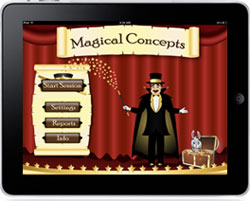Children love the iPad and are masters at knowing what to touch, how to touch, move, or activate whatever is on the screen. Their abilities with the iPad and other technologies does not necessarily translate into a learning experience. Therein lies the problem. I have observed children as they use technology and have noticed that, left alone with the iPad/computer, it holds their interest as long as the games are fun without being challenging. If our work with children involves challenging them to go the next step, how do we turn the iPad into an effective learning tool?
Unfortunately, at this point in the evolution of apps, it is a learning tool if we sit and watch the child perform tasks using the iPad. Voice recognition capabilities are not yet developed enough to provide accurate feedback directly to the child. We are the ones who need to give the feedback. We, not the device, determine if the child correctly said a word or phrase. How about tasks involving auditory comprehension that can be tracked and scored? I have reviewed a few apps that have those capabilities. But here’s the problem. Unless we sit with the child and watch how the the child responds, we have know way of knowing if the child randomly tapped a picture or if he knew the answer. Neither can the computer tell what is going on. For example, a common receptive vocabulary task is to tap the picture named. What is to stop a child from randomly tapping choices? If the task is challenging, the child can rapidly tap pictures until the the screen indicates the answer is correct and the reward (smiley face, stars, etc) appears. If the reward requires too much effort, she will bore of the task and look for an app that is easier and offers more immediate gratification.
One solution is to remain in control of how the child works. The child is carefully instructed about the task. If I see the child randomly touching, swiping or tapping, I intervene and bring the child’s focus back to the task. Do I need to constantly monitor? No and yes. If I wish the child to learn from the app, I monitor. I relinquish this level of control when I use the iPad as a motivational tool. As a motivational tool, the child is allowed to select the app. He/she can even switch among apps. That is because what is important is the reward for the child after having put out effort or succeeded in whatever therapy goal we may be working on.

